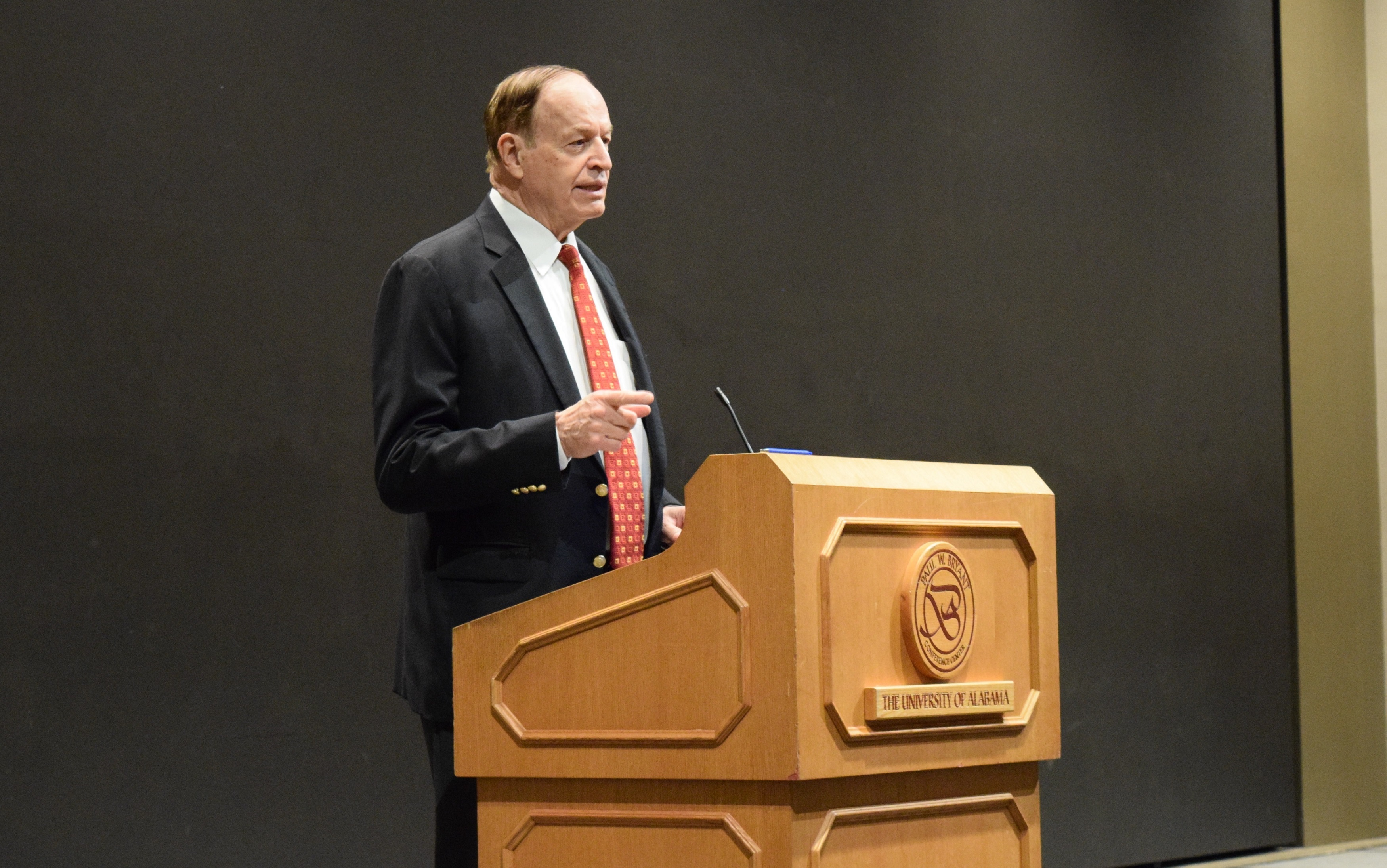TUSCALOOSA, Ala. – The Cooperative Institute for Research to Operations in Hydrology recently held its inaugural science meeting at The University of Alabama, bringing together water researchers and professionals to establish its future vision and path.
CIROH was established in April 2022 with a five-year, $360 million award from the National Oceanic and Atmospheric Administration, the largest external award in UA’s history. The event marks the first time CIROH members and partners have gathered in person to develop, as a community, research priorities and educational activities.
U.S. Senator Richard Shelby, R-Ala., who was instrumental in bringing the National Water Center and U.S. Geological Survey partners to UA’s campus, addressed the CIROH meeting attendees at UA’s Bryant Conference Center. Shelby was joined by UA President Stuart R. Bell and Dr. Russell J. Mumper, vice president for research and economic development, in congratulating the University, CIROH and NOAA for ongoing efforts to translate water research into operations that improve the nation’s ability to predict water-related hazards and effectively manage water resources.
“The world-class research conducted by this competitive cooperative institute will provide transformational support to the scientists and engineers charged with solving today’s pressing water challenges,” Shelby said. “UA is equipped with the necessary tools, resources and minds to lead this initiative and defend one of our greatest resources, benefitting countless communities.”
The main objectives during the meeting were to strengthen relationships among CIROH researchers, foster collaboration with NOAA personnel and refine ideas for education, outreach and engagement. Attendees also worked to develop research priorities that align with operational requirements and catalyze community innovation.
“The University of Alabama’s stature as a forerunner in global water research continues to be bolstered through bold research partnerships,” said Bell. “The inaugural CIROH meeting at our University was another progressive step forward as we discover new knowledge and prepare our students to be the solution finders in hydrological research.”
Headquartered at the Alabama Water Institute, CIROH consists of a consortium of 28 academic institutions, non-profit organizations and government and industry partners bringing together a powerful team of hydrologic researchers across the United States and Canada. They will develop and deliver national hydrological analyses, forecast information, data, guidance and equitable decision-support services to inform essential emergency management and water resources decisions.
“We are pleased with the successful outcome of the science meeting. It was exciting to experience the productive sessions bringing together researchers and operational forecasting professionals from NOAA’s National Weather Service, Office of Water Prediction and National Water Center,” said Dr. Steve Burian, CIROH executive director. “CIROH’s connections to stakeholders were strengthened and ideas emerged to drive its research to operations goal.”
Along with UA, CIROH’s consortium members include: Brigham Young University; Colorado School of Mines; Tuskegee University; The University of Alabama in Huntsville; University of Arizona; University of California San Diego, Scripps Institution of Oceanography; University of Hawai‘i at Mānoa; University of Iowa; University of Minnesota, Twin Cities; University of Saskatchewan; University of Utah; University of Vermont; and Utah State University.
Consortium partners include: Baron Weather Inc.; Coastal Carolina University; Consortium of Universities for the Advancement of Hydrological Science Inc.; Dauphin Island Sea Lab; Gulf of Mexico Coastal Ocean Observing System; Jupiter Intelligence; New Mexico State University; Oak Ridge National Laboratory; Pennsylvania State University; RTI International; Stevens Institute of Technology; University of California, Davis; University of Illinois at Urbana-Champaign; and University of South Carolina.
Contact
Brock Parker, Alabama Water Institute, brockparker@ua.edu
